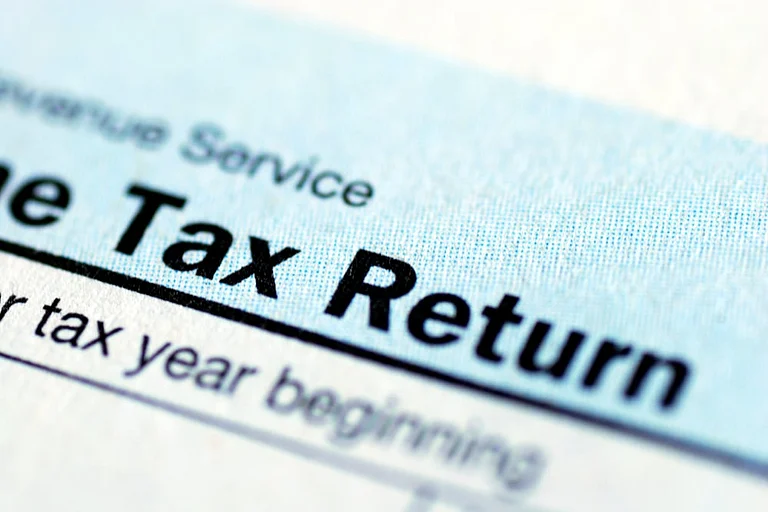In a move that signals a sharper scrutiny of high-value taxpayers, the Central Board of Direct Taxes (CBDT) has asked the Income Tax Department (I-T Dept) to intensify scrutiny of top advance taxpayers and weed out bogus claims for exemptions and deductions.
This step is part of CBDT’s Central Action Plan (CAP) for the financial year 2025-26 which intends to improve revenue collection amid rising tax refund outflows and pending arrears.
The Government has set an ambitious target: Rs 25.20 lakh crore in direct tax collections this year. That includes over Rs 13.6 lakh crore from personal income tax and other non-corporate taxes. After last year’s shortfall, largely due to record-breaking refunds, the tax officials are putting stricter monitoring for any bogus claims for deductions or exemptions.
So, where does that leave the taxpayer?
“Taxpayers, especially the bigger ones, should be ready for tighter scrutiny,” says Abhishek Mundada, partner at Dhruva Advisors.
“The focus of the tax department is to enhance the advance tax collection and mitigate deferment of payment as self-assessment tax by the taxpayers. The tax office already has powers under the law to issue notices to taxpayers to verify the appropriate discharge of the advance tax by evaluating the estimation of taxable income and advance tax thereon. With this focused approach on advance tax collection, one could expect increased surveillance through the increased issue of advance tax notices in this fiscal year 2025-26 itself even before the assessments of these cases which would happen after the taxpayers file their return,” he states.
How can top taxpayers accurately reassess their advance tax liability mid-year to avoid penalties or underpayment notices?
If you’re estimating your FY2025–26 advance tax now, you’d be wise to base it on something more concrete. Says Mundada, “It would be imperative for the taxpayers/ their tax consultants to have sound reasoning/ basis/ rationale for arriving at their estimated taxable income/ advance tax liability for FY 2025-26.”
This may include multiple factors, such as
Estimation of gross income vis-à-vis trends in past years and outlook for the current year,
Supporting basis for the expenditure claim and basis for an increase over the past year(s)/ margins ration,
Anticipation of any non-recurring income in the year (for example, capital gains), set-off of any brought forward tax losses, etc.
“Given that discharge of advance tax happens in four prescribed quarterly instalments, the taxpayers should review the estimates every quarter to mitigate higher interest payments for any shortfall in payment of any/all of the quarterly advance tax payments,” Mundada advises.
Tighter Scrutiny of Deductions: What You Must Do
The department is not just targeting tax underpayment, it’s also looking closely at the kind of deductions people claim. Sections like 80C, house rent allowance (HRA), and business expenses are all fair game for deeper verification. And it’s not just about having a receipt.
Says Mundada, “Maintaining robust documentation is key to the claim of any genuine expenditure/ deduction/ expenses from income-tax perspective.”
Having an entire trail of documents is significant. These typically include:
Contract/agreement
Bank payments
Invoices
Appropriate TDS deductions as applicable
PAN details of vendors and, more importantly on, proof of receipt of services
Mundada further states that taxpayers should review the same before every quarterly payment of advance tax, maintaining sound reasoning/ justification of their estimates and backed up with robust documentation to substantiate the claim. “This would help taxpayers to defend/ address any questioning by the tax officers on advance tax figures.”
With tighter scrutiny, is the Government trying to push taxpayers towards the New Tax Regime?
Says Mundada, “It has been a constant endeavour of the Government/ CBDT to push taxpayers to switch to a new tax regime which does not have deductions/ exemptions claims. There are higher tax slabs, benefit of tax rebate under new tax regime.”
He further remarks that the Government believes that claim of deductions/ exemption leads to interpretational issues and root cause for potential increase in tax litigation. It also impacts collection of income-tax revenue.
“From taxpayers perspective, genuine deductions/exemption helps them to legitimately plan their tax liabilities. The trade-off for taxpayers is ability to claim comparatively lower taxable income (with genuine deductions/ exemptions) but with lower tax slabs as compared to higher taxable income (i.e. without deductions/ exemptions) but with higher tax slabs/ tax rebate benefit.”
For taxpayers, this is a time get proactive. Start with reviewing your projected income, line up your deductions carefully, and revisit your estimates every quarter before making each advance tax payment. Having clean paperwork and clear logic might just be your best defence if the taxman comes calling.












